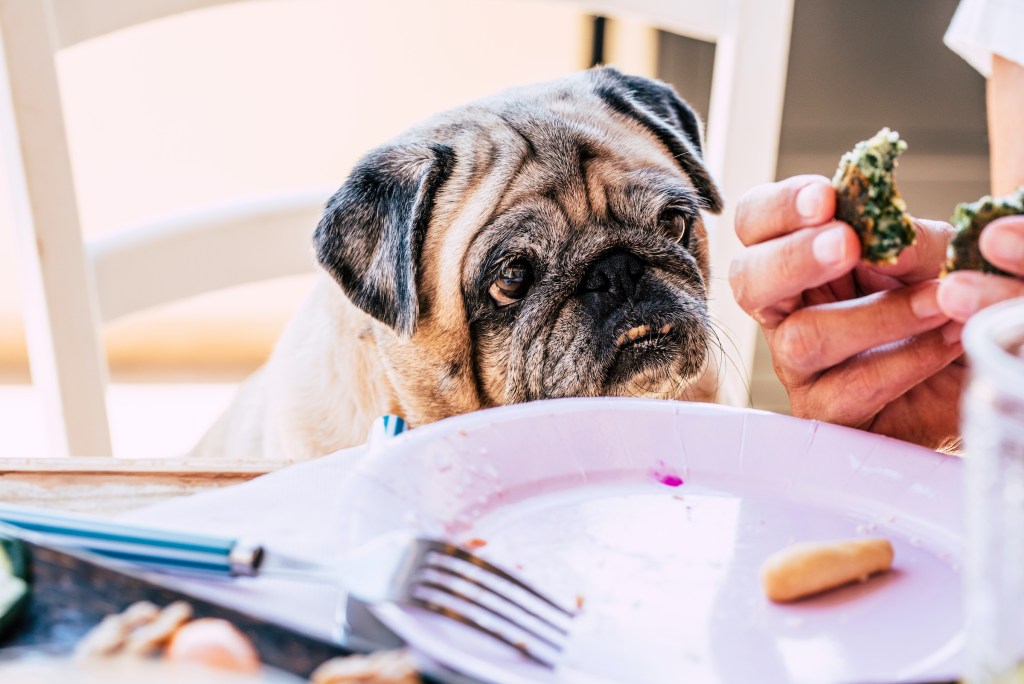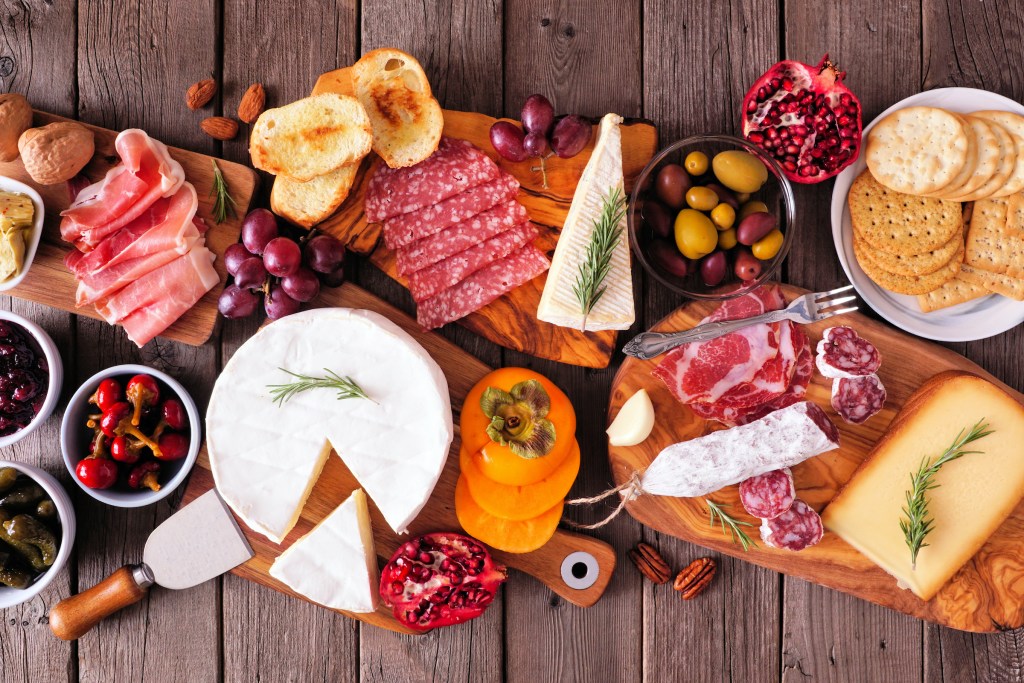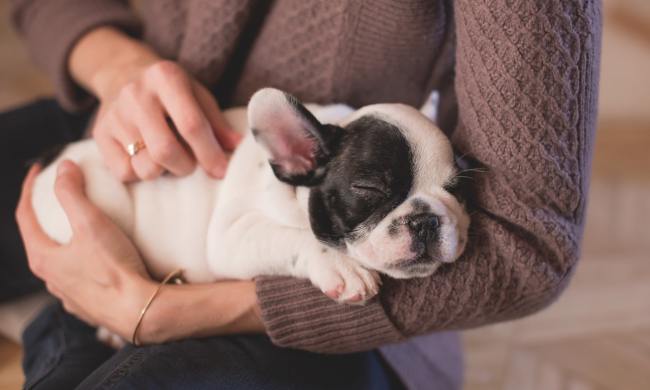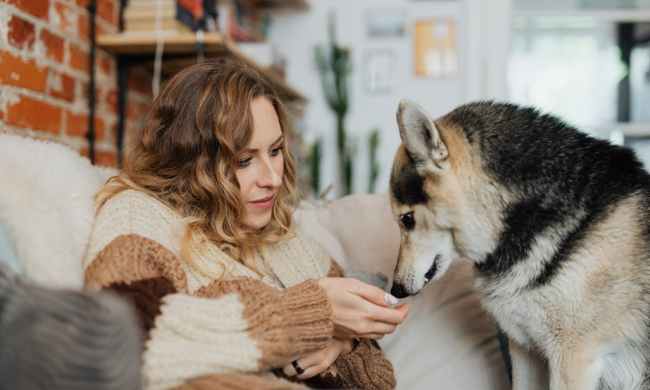Trends come and go, but food will always be there for us — just ask your pup! It’s no secret that dogs love food, but both humans and pups alike can appreciate the variety of flavors and textures of a charcuterie board. But did you know you can even prepare a charcuterie board for dogs?
Yep, you read that correctly: You really can share a trendy, stylish snack board with your pup! As long as all the ingredients you gather are safe for canine consumption (more on that below), there’s no reason why your dog can’t get in on the snackin’ action. Just don’t forget to snap a few pictures first.

What is a barkcuterie board?
Since the onset of the pandemic, charcuterie boards have been a way to shake up snack time, lunchtime, or anytime, really. This trend has been responsible for countless TikTok videos and Instagram snaps, though anyone can make their own board right at a home.
Traditionally, charcuterie boards contain finger foods like sliced meats and high-quality cheeses. Even fruit, bread, and crackers make the cut. In the end, your charcuterie board can be anything you want it to be, though you need to take some extra precautions if you’re going to share this treat with your four-legged friend.
Charcuterie ingredients that are safe for dogs
Unfortunately, not all the usual charcuterie ingredients are good to give to dogs. That doesn’t have to be a problem, though. Here are some doggie-friendly finger foods to think about including on your board:
Turkey, chicken, or other types of meat
Plain, cooked meat will be a hit for your dog — and even for you, too! Whether you choose poultry, beef, or anything else is completely up to you, though there are a few extra details to think about when including your pup.
Lunch meats like salami — which are traditionally used on charcuterie boards — are incredibly high in sodium and not healthy for canine consumption. Any meat you serve should be cooked thoroughly but free of any herbs or spices, as these ingredients can make dogs sick. If you can’t live without your favorite meat or seasoning, consider making a separate serving for yourself.
Fruits & veggies
This category is quite likely the safest for your dog, though not all fruits and veggies are created equal. Remember, grapes (which are common inclusions on charcuterie boards, unfortunately) are extremely toxic and dangerous to dogs. Canines should also not eat cherries, avocado, onions, tomatoes, or asparagus. Luckily, charcuterie ingredients such as berries, carrots, and apples are great additions to your dog’s diet.
Dried meats and fruits
Dried fruits — and even veggies — are great for adding some texture to your charcuterie board.
If dried meat sounds an awful lot like jerky, that’s because it is! It can be prepared easily in the comfort of your own kitchen, though it is time consuming. All you really need to do is thinly slice your meat of choice, then pop those slices in the oven. Several hours or more on low heat will give the texture you’re looking for.
Try the same methods with dog-safe fruit for a different type of jerky. Remember, even the dried form of grapes (aka raisins) are toxic for dogs, so these should be avoided.
Cheese
As a fan favorite for humans and canines, cheese can make the perfect creamy addition to your charcuterie board. Whether you choose your favorites or match up your picks to your other ingredients, there are a few things to remember about feeding your fur baby cheese.
Although cheese is safe for dogs in general, some pups can be lactose intolerant, just like people. Unfortunately, you may not learn whether your dog is affected until after they’ve eaten cheese. So, if it’s their first time — take it slow! Cheese is also high in fat and should be fed in moderation.

Choosing the right board
The presentation of your charcuterie board is the fun part, so feel free to get creative with this step. You can use pretty much any food-safe material as your board, though whatever you choose should stay out of your dog’s reach. Hand-feeding will help with moderation besides.
How to prepare a charcuterie board for your dog
You can give this step as much or as little effort as you’d like, especially since your dog is all about the taste. If you’re all about aesthetics, though, you can arrange the ingredients in a number of creative ways.
Fanning out any slices of bread, meat, or cheese will give just a touch of elegance, while small bowls of fruit or veggies will provide a fun pop of color. You can pair your cheeses next to the ingredients they complement, or you can make your board a rainbow of fresh ingredients. There really is no limit!
However you decide to prepare and share your charcuterie board, remember that moderation is key to a healthy pet. As much as your dog will want to gobble down everything in sight, his long-term wellness will benefit from a bit of restraint. After all, that just means more barkcuterie boards to share in the future!



